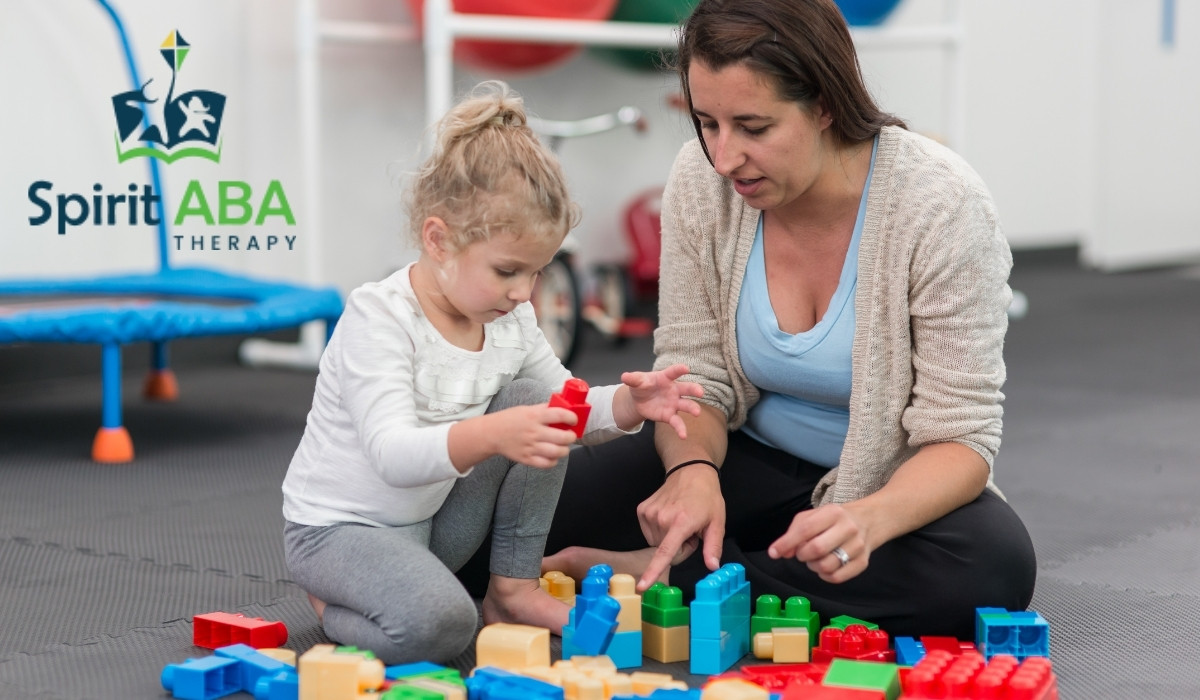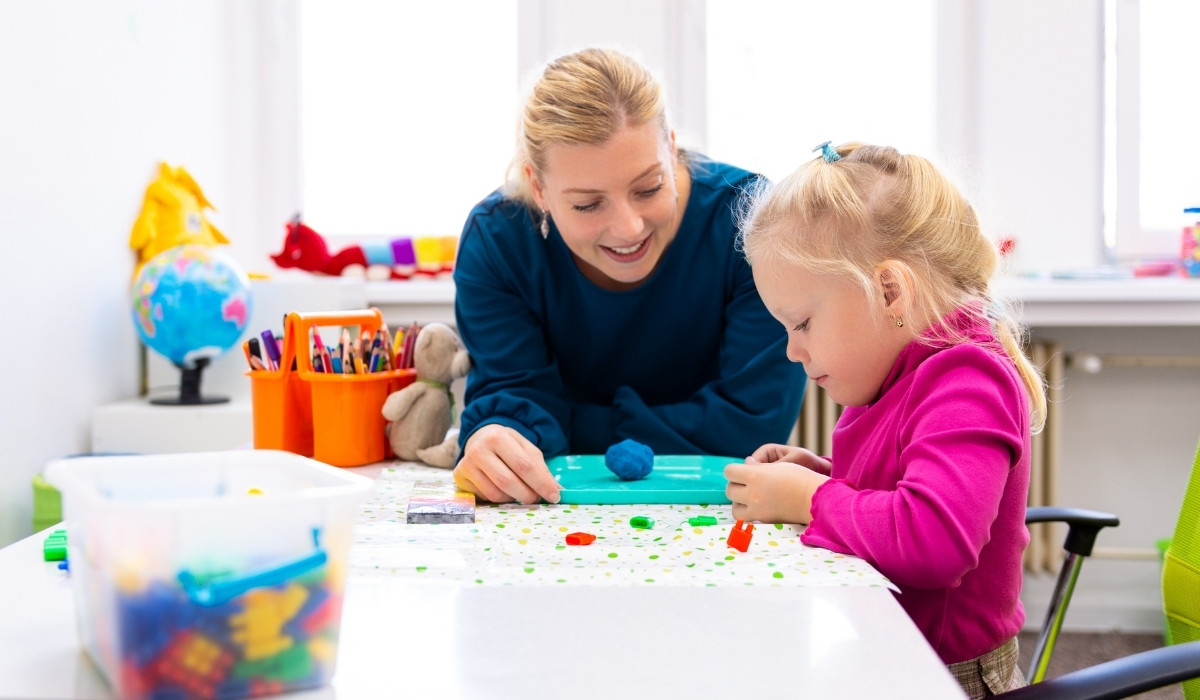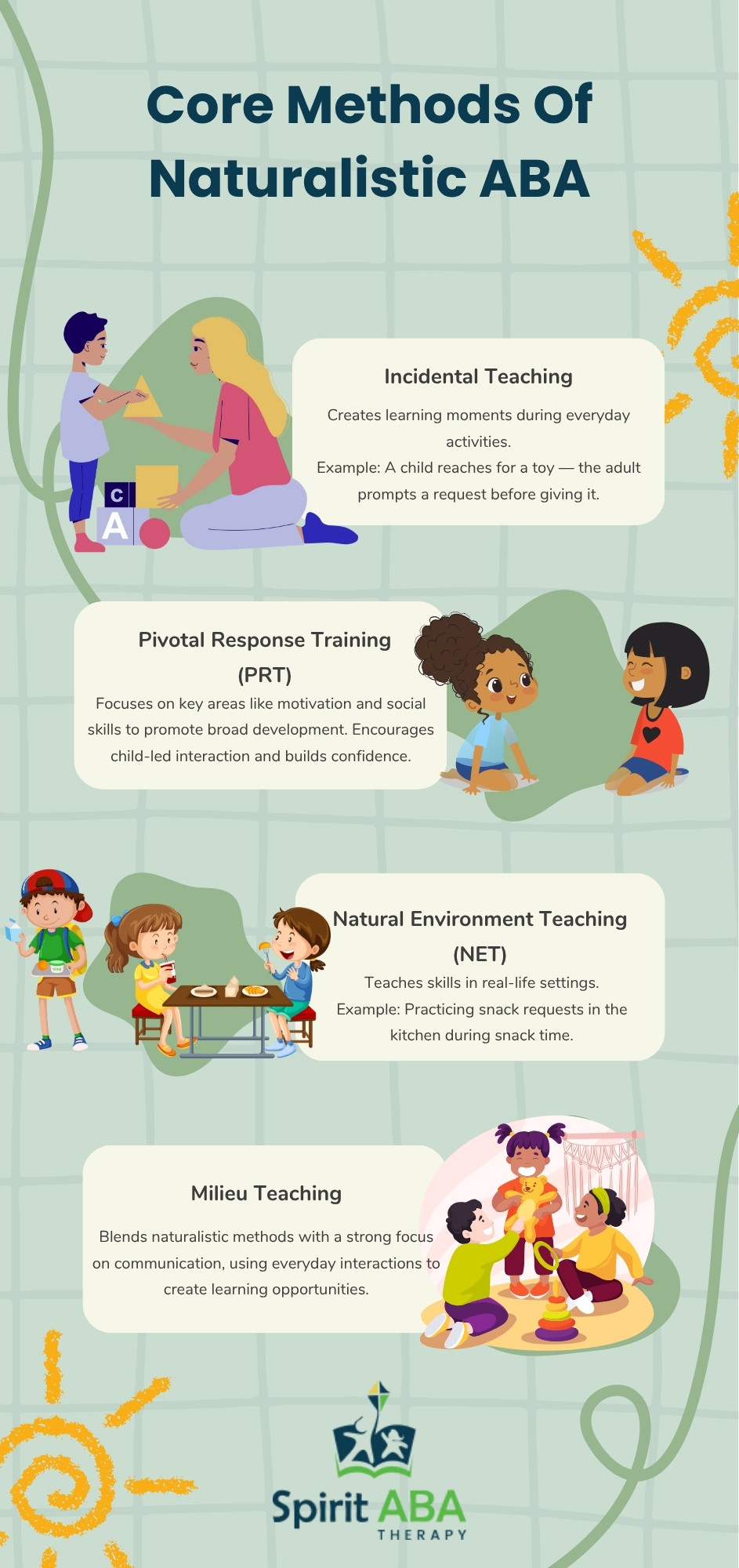Key Points:
- Naturalistic ABA focuses on teaching skills within a child’s everyday environment and activities.
- This approach helps children with autism generalize skills and stay motivated during learning.
- Parents can participate in and support these strategies at home with the right guidance.
Sometimes teaching children with autism can feel overwhelming — what works in one setting may not seem to “stick” in another. That’s where naturalistic ABA comes in, blending learning into everyday routines in a way that feels natural, effective, and meaningful to children and their families.
 What is Naturalistic ABA, And Does It Really Work?
What is Naturalistic ABA, And Does It Really Work?
Yes, naturalistic ABA works—and for many children, it can be a highly effective way to learn. Naturalistic ABA, or naturalistic applied behavior analysis, refers to teaching strategies that take place in real-life situations rather than in a structured classroom or clinic setting. Instead of sitting at a desk to practice skills, a child learns through play, conversations, and daily activities they already enjoy.
This method builds on the same evidence-based principles of traditional ABA therapy but focuses on motivation and interaction. It helps children with autism learn social, communication, and life skills that are easier to carry over into their everyday lives.
Why Choose Naturalistic ABA Over Traditional Methods?
Traditional ABA methods often use structured, table-top teaching, which works well for some children but can feel rigid or disconnected from real-world situations. Naturalistic ABA, on the other hand, emphasizes child-led learning, flexibility, and real-world application.
Here’s why many parents and therapists prefer naturalistic ABA strategies:
- Skills taught in natural contexts tend to generalize more easily to other settings.
- Children are often more engaged because teaching follows their interests.
- It allows family members and peers to get involved, fostering social interactions.
Core Methods of Naturalistic ABA
Naturalistic ABA includes several techniques that can be adjusted based on a child’s needs and preferences. Here are some of the most common methods and how they work:
Benefits of Naturalistic ABA
Many parents want to know: What’s the payoff? The benefits of naturalistic ABA are both immediate and long-term. Because the strategies feel more like play than therapy, children are more likely to engage, which leads to faster progress and better retention of skills.
Some key benefits include:
- Improved motivation because teaching aligns with the child’s interests.
- Better generalization of skills across environments, people, and situations.
- Increased parent and sibling involvement, which strengthens relationships and provides more opportunities for practice.
- Enhanced social and communication skills that feel more natural to the child.
How Parents Can Support Naturalistic ABA At Home
Parents play an essential role in the success of naturalistic ABA. Even small changes in daily routines can create many opportunities for learning. Here are some practical ways parents can help:
Set Up The Environment
Arrange your home so that desired items (like snacks or favorite toys) are slightly out of reach but visible, encouraging your child to communicate when they want something.
Follow The Child’s Lead
Pay attention to what your child is interested in, and use those interests to spark learning. If they love cars, use playtime to practice requesting, labeling, or taking turns.
Create Teachable Moments
Turn everyday activities like mealtime, bath time, or trips to the park into learning opportunities. Pause to give your child a chance to ask, comment, or make a choice before stepping in.
Practice Positive Reinforcement
Celebrate successes — big and small — with praise, smiles, or small rewards, reinforcing the idea that learning is fun and rewarding.
Common Myths About Naturalistic ABA
It’s also helpful to clear up a few misconceptions that can cause confusion for parents:
- Myth: It’s just playtime, not real learning.
Reality: While it looks like play, naturalistic ABA is carefully planned to teach and reinforce important skills. - Myth: It doesn’t work as well as traditional ABA.
Reality: Research shows it can be just as effective — and sometimes even more effective — depending on the child. - Myth: Only therapists can do it.
Reality: Parents and caregivers can absolutely learn to use these techniques at home with the right guidance.
When To Consider Naturalistic ABA
Not every child responds the same way to every teaching style. Naturalistic ABA is especially helpful if:
- Your child is resistant to highly structured sessions.
- You want learning to blend seamlessly with family life.
- Generalization — applying skills in multiple settings — is a priority.
A qualified therapist can help you figure out the right balance of naturalistic and structured teaching for your child’s needs.
Ready To Support Your Child? Let Spirit ABA Help!
If you’re looking for compassionate, effective ABA therapy in Colorado, Iowa, and Nebraska, Spirit ABA is here to help. Our team of professionals understands the power of naturalistic ABA and can guide your family through strategies that fit your child’s unique strengths and interests.
Blending evidence-based techniques with empathy and practicality, we’ll work alongside you to create meaningful progress — right in the environments where it matters most. Whether you’re just getting started with ABA therapy or looking to enhance what you’re already doing, our therapists are ready to support you every step of the way.
Get in touch with us today to learn how ABA therapy can empower your child and your family. Together, we can make everyday moments count!



